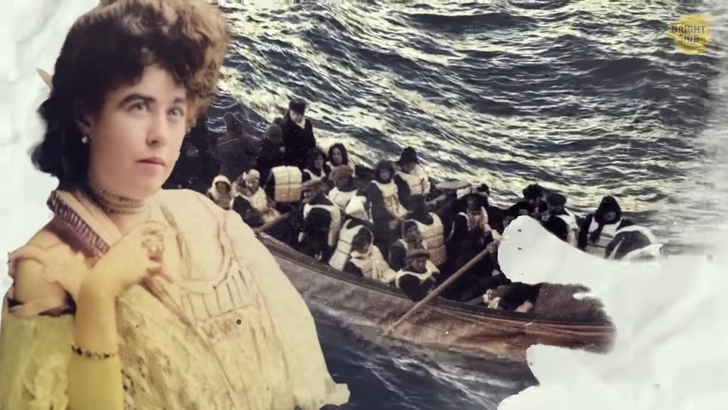18 Employees Who Saw Their Choices Backfire Hard


“I’ll never let go, Jack. I’ll never let go,” — said Rose. Then, she did let go, and the whole movie theater burst into tears. It happened when “Titanic” came out in 1997. Alright, who am I kidding, it’s really hard not to cry when you watch this scene for the 10th, 20th, and 50th time almost 30 years later. But did this great love story happen in real life, or did James Cameron just invent it for some good drama?

As much as I don’t want to disappoint you, Jack and Rose never fell in love on board the real Titanic. There was a real J Dawson on the luxurious ocean liner, but he was a crew member, and his full name was Joseph. The real-life inspiration for Rose was the American artist Beatrice Wood. James Cameron came across her biography while he was working on the first draft of the script and decided to bring her love for art and family background into the story.
It doesn’t mean that the movie is completely off when it comes to historical accuracy, though. The unsinkable ship that sank departed from Southampton, England, to New York and was 400 miles south of Newfoundland on April 14 when crew members noticed the iceberg. The contact with it lasted 37 seconds, precisely as long as the corresponding scene in the movie.
Remember this guy, Thomas Andrews, who was wandering around with a small notebook and pencil? He was the real ship designer. Andrews was quite talented at what he did and had worked on many successful projects before the Titanic. He would normally travel on the ships he designed during the maiden voyage to make sure everything was going smoothly. He boarded the Titanic as one of the first-class passengers and was taking notes all the time. After the unfortunate rendezvous with an iceberg, Andrews was seen inspecting the flooded parts of the ship with Captain Smith. According to his sad forecast, the Titanic would have gone down in about two hours. One of the stewards claimed that he had seen Thomas Andrews moments before the sinking. He chose not to leave the Titanic and didn’t put on his life belt. No one had seen him ever since.

Another memorable moment from the movie is a boy playing on one of the decks with his spinning top. This was an accurate recreation of a real photo that was taken onboard the Titanic on April 11, 1912. The passengers in the photo are first class passengers Frederic Spedden and his 6-year-old son Douglas. The family was going back home to America after traveling around Algeria. When the evacuation of passengers began, Spedden’s nurse told him they were going to see the stars. They say he had successfully slept through the entire drama and woke up safe and sound in a lifeboat the following morning. His father had also survived the sinking. Sadly, an automobile accident took the life of Douglas just 3 years later.
One of Titanic’s most charismatic ladies, both on the screen and in real life, got her nickname “Unsinkable Molly Brown” for a good reason. Several witnesses remembered she was, indeed, trying to persuade others in her lifeboat to go back and save more lives, just like in that heartbreaking scene from the movie. When Carpathia came to the rescue of the surviving Titanic passengers, Margaret Brown was helping lower-class survivors and involved her fellow first-class passengers in the process. Once they all got on solid ground, Brown organized a survivors’ committee. She awarded the captain of the Carpathia for rescuing so many people and was really upset she hadn’t been allowed to testify at the Titanic hearings because she was a woman.

You won’t see any fumes above the fourth pipe of the ship in the movie. It’s not a technical mistake: the Titanic, indeed, had it only for more impressive looks and didn’t really need that pipe. Back in 1911, the year before our hero’s departure, large ships would mostly sail with four chimneys. They needed those to draw heat and fumes from their massive boilers. The Titanic was a real engineering gem that only needed three chimneys to function. So the fourth was added for balance. They thought the public would have been disappointed to only see three pipes on the greatest ship of all time.
The movie had an impressive budget [$200 million], but even that wasn’t enough to cover all the possible costs. Cameron knew they had to save some money, so they built the replica of the liner only on the starboard, which means the right side. They chose this side to make things look more realistic. The wind at the filming location was moving mostly from north to south, so with the fumes going out, it looked like the liner was actually moving through the ocean. But if you remember one of the first scenes with the Titanic departing from Southampton and people waving, you’ll understand why the crew had a problem with it. The real ship was docked at the port, or left side, there. They found a brilliant solution and just flipped the scene horizontally to make it look real. The letters and buttons on costumes were reversed, and actors walked in the opposite direction for everything to be changed in post-production.

One of the scenes I can’t watch without tears is the elderly couple holding on to each other as they go down with the Titanic. The couple who inspired this heartbreaking episode were real people, some of the richest passengers of the not-so-unsinkable ship. They were Isidor and Ida Straus, and they owned Macy’s. When news of the disaster spread, they put on life jackets and ran to the decks along with others. Ida stepped onto the lifeboat, but Isidor refused to do so before all the ladies and little ones were there. Ida didn’t want to leave her husband. She climbed out of the lifeboat and handed her mink coat to her maid, saying she would no longer need it. Isidor wrapped his arms around Ida, and they remained on the bridge of the ship until a huge wave swept them both into the sea. So, the bed scene wasn’t that accurate, and James Cameron later admitted he had taken some license as a director.
You know this guy, who was drinking from a flask next to the main characters as the ship was going down? His name was Charles Joughin from England, and he was in charge of 10 bakers, 2 confectioners, and a Vienna baker aboard. He was expecting to earn a real lump sum and would have been one of the best-paid crew members if everything had gone well. The night the iceberg hit, Joughin was off duty, taking a rest in his bunk. He immediately woke up and sent his bakers to deliver bread to lifeboats. He then returned to his room for a drink. Once he came back on the deck, he helped others get in his assigned lifeboat. There was no more room for Charles inside, so he ended up on the outside of the rails of the ship. Finally, when the Titanic submerged, he just swam away, and as the Sun rose again, he found one of the lifeboats and was rescued by Carpathia. The contents of the flask must have helped him survive.

The well-dressed man who decided to stay on the Titanic forever was American businessman Benjamin Guggenheim. That last name probably sounds familiar — and yes, he was from that famous family. Guggenheim was traveling with his valet, his significant other, a singer from France called Leontine, her maid, and their chauffeur. They all boarded the Titanic in France during one of the short stops it made after leaving Southampton.
When disaster struck, Benjamin was helping the ladies get in their lifeboat. He reportedly said they were only saying goodbye till the next day. He was sure the ship would be quickly repaired. After helping many women and youngsters get in the boats, Guggenheim chose not to fight over the remaining seats. He and his valet returned from the decks to their first-class suite and put on their finest suits to “go down like gentlemen.”











